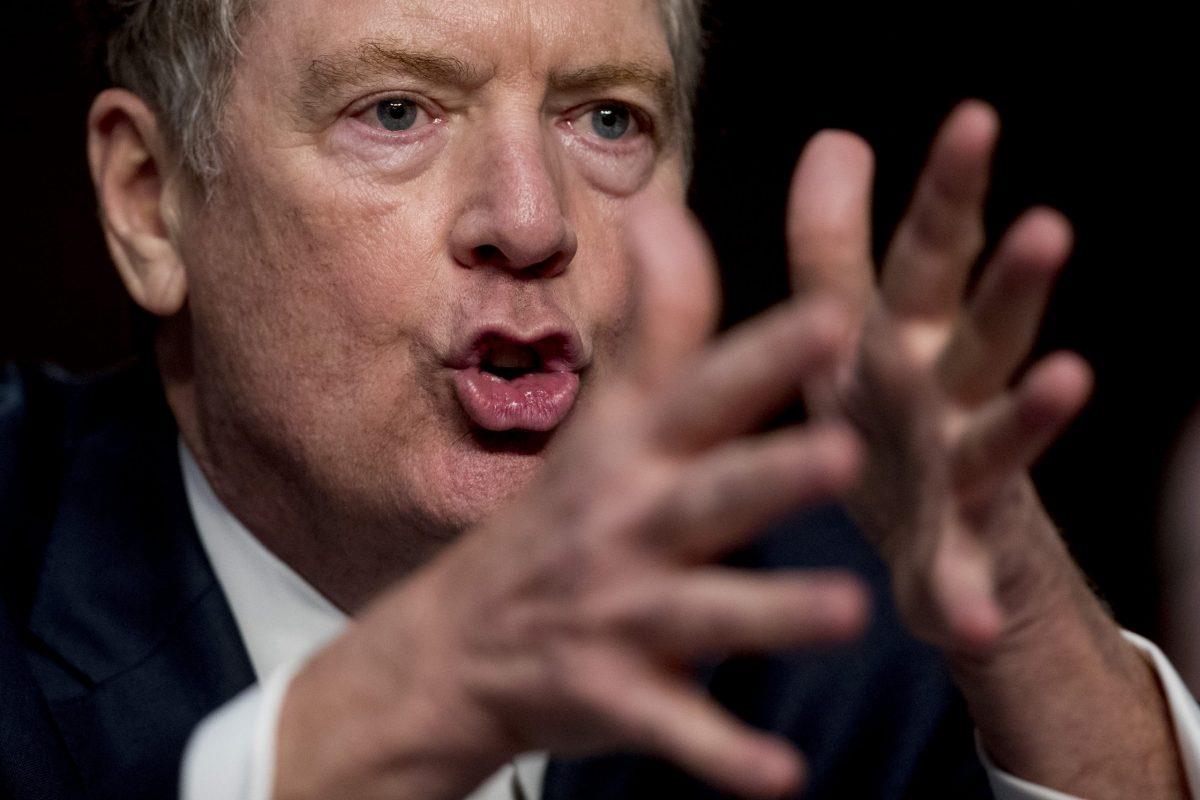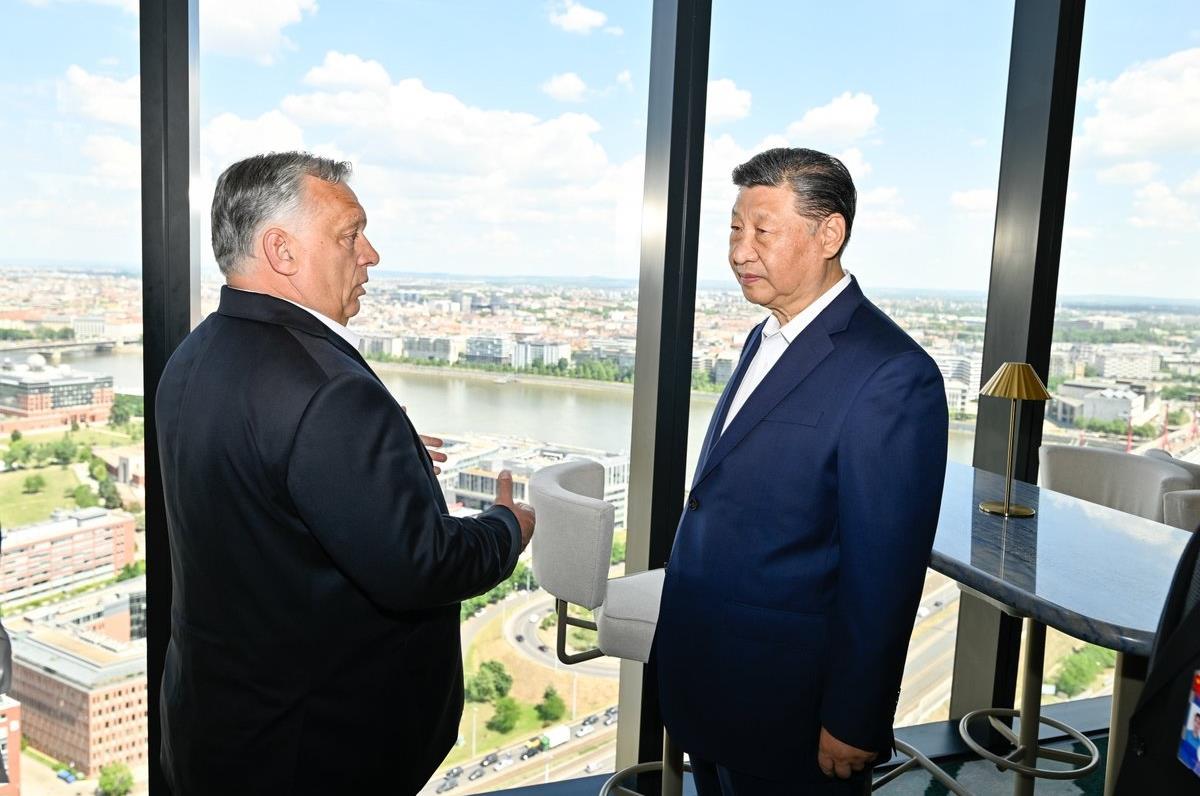
Hungary Is Helping Europe Kiss Decoupling Goodbye
Behind the Chinese president's visit to these two EU capitals, some analysts have suggested a sinister agenda to divide Europe within itself or separate it from the United States.
But today, the only division within Europe appears to be between those who recognize that European strength depends on connectivity and those who imagine that Europe can restrict its way to strength. In that contrast, the strategic leadership now belongs to Budapest.
In recent years, both Paris and Budapest have been advocating for a more articulate European role in the emerging multipolar world order. While France has prioritized the language of strategic autonomy , Hungary has focused on articulating a national strategy of connectivity.
On his visits to the two countries, the Chinese leader signed 18 agreements in each of the two locations. But industrial development through foreign investment-not only through China's Belt and Road framework but from many other partners, as well-has begun to occur in Hungary on a different scale.
During the heyday of globalization in the 1990s, it was the departure of Western industry for China that became known as the“China Shock” phenomenon. But while European industry continues to lag-EU industrial production declined about 5.4% between February 2023 and 2024-Hungary has nearly doubled its FDI stock since 2010 and, according to the Hungarian Institute of International Affairs, is defying regional downtrends . Inward investment is now driving reindustrialization.
Because of Hungary's history and geographic location, it was early in spotting the trend toward bloc formation that began a few years ago. Hungary's response was to adopt a different mindset and pursue national industrial strength on the basis of connectivity with all partners.
Connectivity isn't about ideological alignment. It's about leveraging Hungary's role as an east-west crossroads to build an economy that serves the Hungarian people and fosters political and cultural exchange-whether the incoming connections are from Germany, the United States, China, South Korea or anywhere else.
On a broader scale, the connectivity model underlying Hungary's strategy is based on the view that the intricate links that have developed between West and East shouldn't be severed but rather leveraged.

Unleashed bank deposits misused in Chinese economy

Trump's trade war would damage us all

A silenced Muslim valedictorian speaks, sort of ...
Particularly in Europe, this now seems to be an imperative of some urgency. European economies have been stagnant since energy sanctions imperiled many manufacturers. To regain its competitive strength, Europe needs to maintain and expand its economic openness.
Hungary isn't alone in its recognition of this. Alfred Kammer, the IMF's European director, recently stated that“our number-one advice to Europe is, don't become protectionist.”
Even the current Polish government recognizes this situation. In a recent speech to the Sejm, Polish foreign minister Radosław Sikorski called for peaceful competition between China and the United States.“We do not want to choose,” he said,“between having good relations with a major trade partner on the one hand, and the most important security provider on the other.”
German Chancellor Olaf Scholz also recently pointed out that Germany, too, doesn't want to decouple from China .
Yet without positive discussion of this on the European level, the cooling international environment around EU-China relations leads to large opportunity costs.
Recently the European Union launched a number of investigations into Chinese firms. The European Commission began an inquiry into Chinese medical device manufacturers as well as to TikTok. Its investigation into the Chinese EV industry has also been ongoing since late last year, and European officials are now expressing concerns about Chinese buses .
These measures are counterproductive, as the underlying problem concerns Europe's own lack of competitiveness. European consumers would be happy with cheap Western-made solar panels, electric cars and wind turbines. But for Europe to exclude Chinese EVs, a devastating 55% tariff would be necessary, according to the Rhodium Group .
To place this in perspective, the aggressive EU tariff on American cars is currently 10%. Instead of competing on industrial capacity or price, the“one field where the European Union still leads the world,” as the Wall Street Journal put it recently , is now regulation. Evidently a different mindset is needed in Brussels.
The Hungarian case represents a different possibility-that warm bilateral relations can underlie projects of reindustrialization. The Hungarian strategy has involved attracting Chinese (and other) manufacturers to physical operations within the European Union, on the view that this strategy is not in conflict with promoting domestic manufacturing, but rather supportive of it.
China-Hungary industrial cooperation has focused principally on Hungary's role in the automobile supply chain. Hungary is the location of CATL's second European battery factory, and the southern Hungarian city of Szeged will be the site of BYD's first European electric car factory.
After last week's visit, it's clear that Budapest's path isn't just words. In 2023, China became Hungary's biggest single investor with almost 11 billion euros of investment, amounting to 6.5% of GDP.
During the Chinese president's visit, Hungary announced a number of new substantive industrial projects -including a rail ring bypassing Budapest that will facilitate the westward shipment of manufactures; a high-speed connection from the Budapest airport to the city; a national network for charging electric cars; and a comprehensive agreement on nuclear cooperation.
The larger story here is that Europe needs to articulate its own interests on the international stage. If European economies followed a similar path, they could focus on their strengths while not simply hemorrhaging industrial capacity to areas beyond their shores. Neither great power-neither the United States nor China-should drive a wedge between Europe and the other.
In the changing geopolitical environment, Europe must adopt a strategy of prudent connectivity and articulate it as an important element of European strategy. Otherwise, its open economic framework will suffer as tensions between China and the United States lead to greater pressure on Europe to decouple, which would in turn injure the European economy.

Sign up for one of our free newsletters
- The Daily ReportStart your day right with Asia Times' top stories AT Weekly ReportA weekly roundup of Asia Times' most-read stories
Further, a shift of American military posture toward Asia could also heighten the demands on Europe to provide for its own defense. But since a decoupled Europe would be industrially weak, a connectivity strategy is also necessary to heighten Europe's defense-industrial capability.
As I have argued elsewhere , American interests would be poorly served by attempting to pressure Europe into a course of decoupling that it could not ultimately follow. While the United States appears to be going in a more protectionist direction, Europe is not in a position to tilt toward economic warfare with China.
The path that the United States has taken in recent years emerged because of American industrial decline and the American role as a Pacific power. In order to adjudicate its own concerns effectively, though, the United States shouldn't attempt to drag the rest of the world into tensions that few others want to participate.
In his speech alongside the Chinese president , Viktor Orban said“now we live in a multipolar world order-and one of the structural pillars of this new world order is the People's Republic of China.”
After 30 years of globalization, the global economy is far too intertwined to be pulled apart easily. EU investigations won't rebuild European industry but rather create a climate of suspicion that's injurious to business development.
While the Brussels vision of Europe's role continues to push for“de-risking” the Europe-China relationship, Budapest has embarked on an industrialization strategy aimed at contributing to national and European sovereignty.
The European decisions that follow in the coming months will tell us a lot about whether the EU wants to become a thriving economy and a pole in the multipolar world order-or wants to allow its interests to be undermined by more powerful forces.
Gladden Pappin is president of the Hungarian Institute of International Affairs, Hungary's foreign policy research institute of state.
Thank you for registering!
An account was already registered with this email. Please check your inbox for an authentication link.

Legal Disclaimer:
MENAFN provides the information “as is” without warranty of any kind. We do not accept any responsibility or liability for the accuracy, content, images, videos, licenses, completeness, legality, or reliability of the information contained in this article. If you have any complaints or copyright issues related to this article, kindly contact the provider above.
Most popular stories
Market Research

- Manuka Honey Market Report 2024, Industry Growth, Size, Share, Top Compan...
- Modular Kitchen Market 2024, Industry Growth, Share, Size, Key Players An...
- Acrylamide Production Cost Analysis Report: A Comprehensive Assessment Of...
- Fish Sauce Market 2024, Industry Trends, Growth, Demand And Analysis Repo...
- Australia Foreign Exchange Market Size, Growth, Industry Demand And Forec...
- Cold Pressed Oil Market Trends 2024, Leading Companies Share, Size And Fo...
- Pasta Sauce Market 2024, Industry Growth, Share, Size, Key Players Analys...






















Comments
No comment